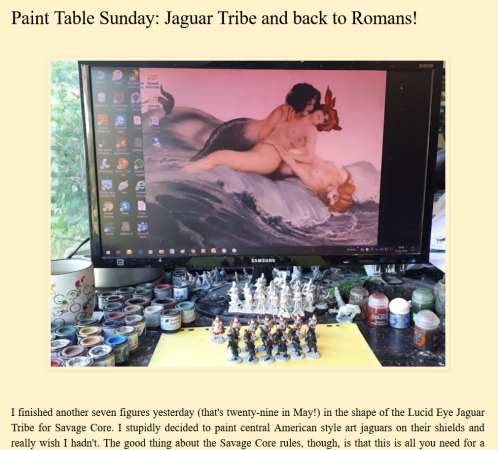So here's what I consider the meat of this second installment. I wanted the horse to be noble and distinctive, a horse no one would confuse with another. I began by gathering reference online. Google image search was giving some decent results, but after a few minutes, I decided I might have better luck with Flickr. I figured on Flickr, I would be more likely to find groups of shots of a single animal, and the shots themselves would likely be larger.
This was a good move on my part. The images I found on Flickr were terrific. Mainly because I wanted something really interesting to center this article on, I decided to take up the challenge of a dappled gray horse.
The horse I eventually chose to paint is actually a composite of several I found on Flickr. A large percentage was based on one horse I found that had three white "socks," with dark legs that blended into a dappled torso. The mane and head were taken from another horse, also dappled. The horse with the socks had a dark mane, and I wanted a light mane, in part to contrast with the dark hair of the elf.
Basecoats
Glancing at the pic below, you may be saying to yourself - that looks horrible, what is he doing? Well, here's what I was thinking: I knew the lightest areas on the horse would be pure white, so I decided the basecoat for the majority of the horse would be a creamy, off-white color with a hint of green. I knew I'd need a lot of it for the all the horse's surface area, and it would be hard to mix up later and match. I made a large batch of it, and saved it in a separate container.
- Mix:
- VMC Off-White, VMC Stone Grey, GW Bleached Bone
I painted the entire horse this color, except the mane.
The legs then needed a much darker basecoat. I painted the legs black, keeping the socks neat, but leaving the join with the Off-White messy since I had plans to blend these colors together.
The mane got a basecoat of VMC Dark Grey - and, since I wanted a few of the shadows darker, a selective wash of black.
Places on the light portions of the horse where I wanted shadows, I painted in a mix of Bleached Bone and Stone Grey. Again, my intention was to blend, so I didn't bother with being neat.
Still, at this point I was a bit anxious. It did look bad. Would the blends work?

Blending the Horse Body
Normally, I blend two colors that have similar hues, and not polar opposite tones. Here, I was blending black and white.
Normally, I mix a ton of retarder in the darker color, paint a second coat of that darker color on top of the first, wipe my brush, stripe on the lighter color, wipe again, then blend. In this case, I had to swish the brush out in water between colors so they wouldn't contaminate each other.
At the border, I painted black + retarder on the black side, my white mix + retarder on the white side, washed the brush, then blended. I used a Winsor and Newton Series 7 #2 brush.
In all honesty, it was pretty difficult. I'm happy with the results, but there's always room for improvement. One tempting option for the future is oil paint. The ease of rich, smooth blends with oils seems to make them an ideal choice for horses.










